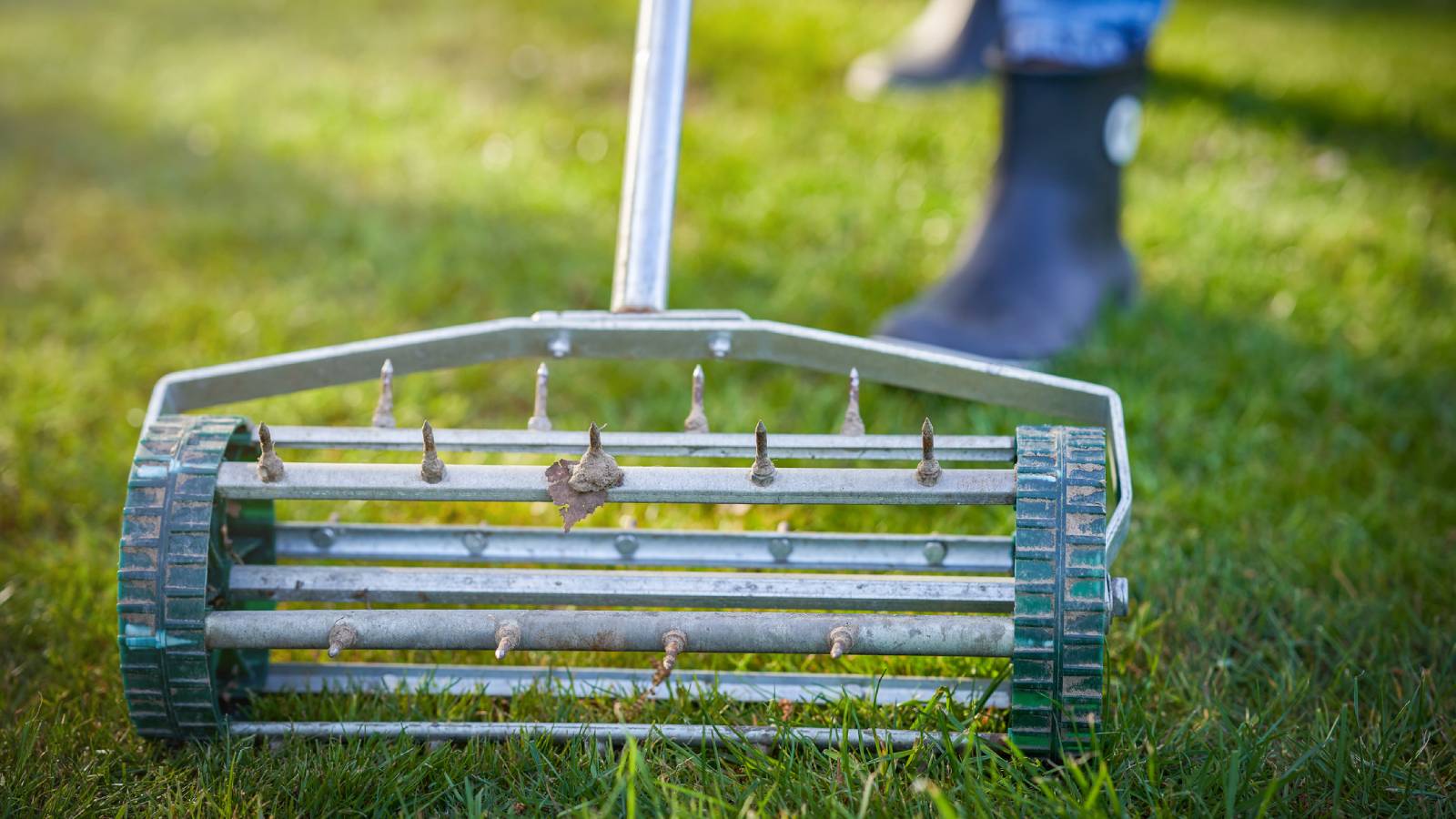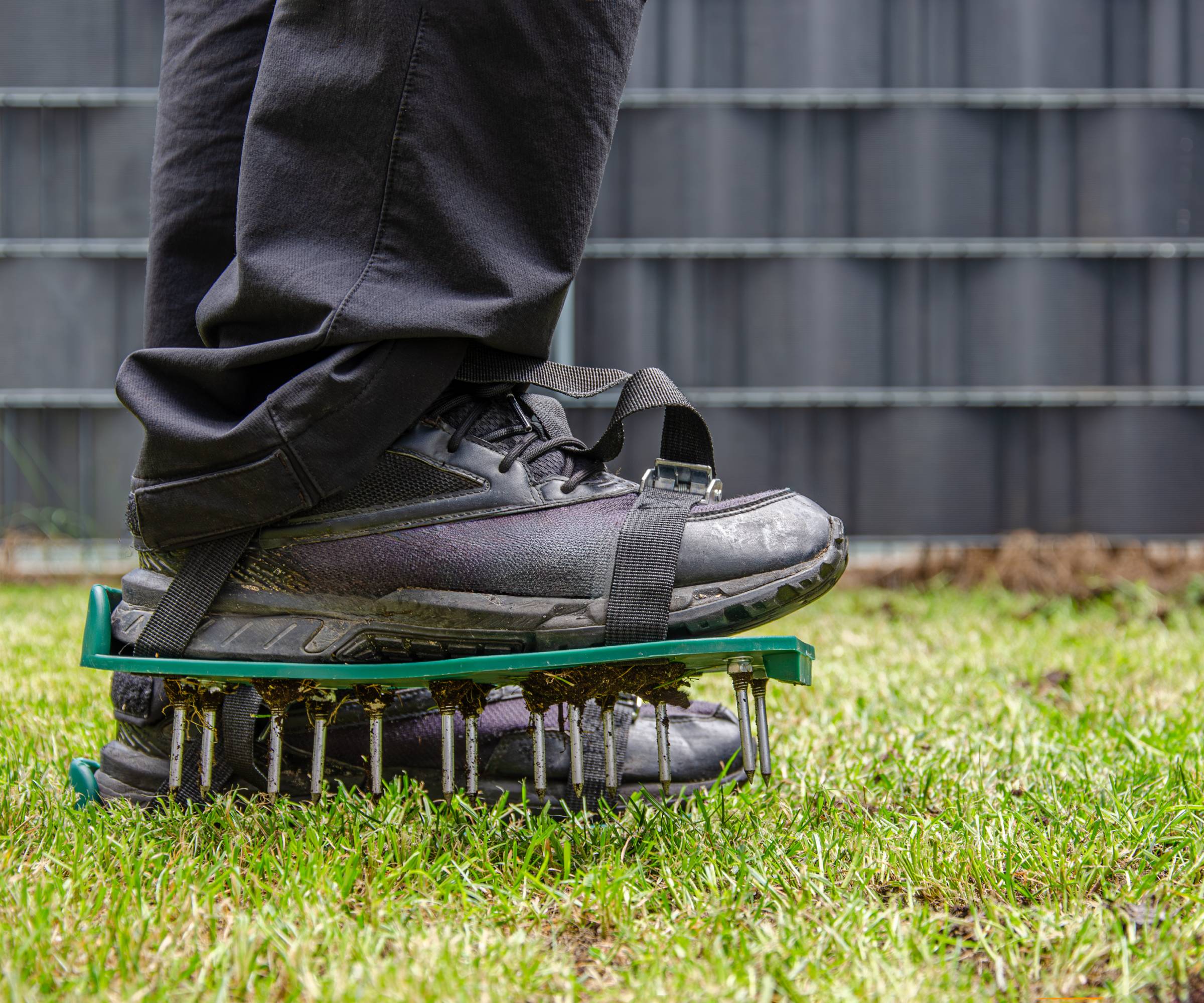Ultimate Guide To Lawn Aeration: How & When To Do It For A Healthier Lawn
Give your lawn some room to breathe! Read our ultimate guide to aeration for healthier, happier grass.


A lush green lawn is the best welcome mat – but keeping grass looking great is a labor of love. Lawn aeration is high on the “labor” list, and you ignore it at your peril. Old, dead grass material - termed thatch - builds up in a lawn over time, preventing air, water, and nutrients from reaching the plants’ roots. This results in pest and disease issues that degrade a lawn’s natural beauty.
Since aerating a lawn removes thatch and loosens compacted soil, it's an important part of lawn care. The aeration process can seem intimidating, but once you understand the whys, whens, and hows, it’s easier to schedule it every year.
What Is Lawn Aeration?

When thatch and compaction choke off the lawn grass, they essentially block the plants’ access to water, nutrients, and even air. Lawn aeration is a way of controlling thatch: a process of opening up that access by creating many small holes in the blockage. These holes provide a way for air, water and fertilizer to get to the grass roots, restoring the lawn to health.
There is more than one way to cut holes in the lawn, including removing small plugs of soil (core aeration), slicing the soil (slicing aeration), and poking holes in the soil (spike aeration). All types of “hole poking” open access for essential nutrients and water to move down into the plant roots.
Clearly, any plant is better off when air, water, and nutrients can get down to its roots. But the benefits of aeration go beyond this. Lawn aeration is also effective in loosening up the soil in a lawn that has been compacted by heavy foot traffic or vehicle parking, giving the grass roots more room to expand. More grass blades translates into thicker, lusher lawns.
Since aeration encourages looser soil and better drainage, aeration also prevents waterlogged soil. All in all, soil aeration makes your lawn happier and healthier.
When to Aerate A Lawn
Almost every garden task is best when it's done at the appropriate time. The best time to aerate a lawn is just before its prime growth period, which depends on whether you have cool-season or warm-season grass.
Sign up for the Gardening Know How newsletter today and receive a free copy of our e-book "How to Grow Delicious Tomatoes".
What is cool season grass? Remember that cool-season grasses grow best when the weather is cool and go dormant (stop growing and often turn brown) in periods of heat. And what is warm grass? Warm-season grasses are the opposite, looking lush and lovely during the hottest part of the summer, then going dormant as the temperatures drop.
For best results, aerate cool-season grass in early autumn and warm-season grasses in early summer. Act in the early morning.
The good news: for most lawns, once a year is enough! However, you should consider twice a year if you have clay soil or use your lawn for parking.
Should You Aerate Your Own Lawn or Hire a Pro?

Although we’ve called aeration a labor of love, it doesn’t have to be your labor. There are specialists in every region who will come to your home and aerate your lawn for you. This may not be a free service, but you're likely to get someone who knows the business, has the equipment, and can tackle the project quickly, efficiently, and successfully.
Costs to have a professional aerate your lawn depend on many factors, including:
- Lawn size
- The prep work involved
- The type of aeration (with spike aeration being least expensive)
- Where you happen to reside, since rural costs run lower than urban costs.
Also of importance: the average lawn can be aerated by a professional in a couple of hours, while a DIY first-timer might invest an entire day.
On the other hand, aeration isn’t so complicated that an ordinary human being can’t do it - all you're really doing is poking holes in the soil. The challenges are obtaining the correct equipment and learning how to use it. You might (or might not!) save money, but you are likely to feel more deeply connected to your lawn if you put in the time and effort yourself.
Necessary Tools for Aerating Lawns

You'll need tools to poke holes in your lawn’s soil, and they can be expensive. The best bet is to rent an aeration machine from the garden or hardware store. There are several options. While core aerators offer the best results, this is also the most difficult option for a DIY aeration.
If you have a tractor or ride-on lawn mower, you can consider a pull-behind core aerator. Pull-behinds are less expensive since they don’t have their own engines. They hitch to the rear of the tractor or mower and there’s no pushing to do! You just drag them behind. This Tow Plug Aerator from Home Depot is a great option!
Otherwise, you’ll need to select between a gas-operated lawn aerator or an electric lawn aerator. Gas-operated machines look like a push-style lawnmower but can be difficult to control. Remember that they're punching holes in the lawn over and over, so if they hit dense soil or stones, they can jump or buck. They're also noisy and weigh a lot. In fact, take a friend when you go to rent one to help you get it to your house!
The other options are either electric – aerators that run on batteries or power cables – or manual, powered by you. These may not have the power to do core aeration, but they're lighter to lift and easier to carry around in the car.
This Electric Dethatcher available on Amazon actually collects the thatch that it removes.
These Lawn Aerator Shoes from Wayfair are a simple and inexpensive option, and you might actually have some fun tromping around in them.
Home Depot has a handheld 15 Tine Spike Aerator that's easy to wield and will get the job done.
How to Aerate a Lawn

Lawn aeration offers a bouquet of complex benefits, but the actual process is simple.
- Be sure the lawn is wet. Either wait to aerate until the day after a heavy rain, or irrigate the lawn thoroughly the day before aeration.
- Mark any “hidden” obstacles like irrigation ports with flags so that you won’t run over them.
- Run your aerator over the lawn in rows in one direction, then start over and repeat the process in the perpendicular direction.
What To Do After Aerating
Water the lawn well and apply a slow-release fertilizer after aerating. This is also a good time for overseeding if that’s on your list. Don’t mow for at least two weeks and keep vehicles and heavy machinery off the lawn.
Frequently Asked Questions
What is the average cost for lawn aeration?
Whether you do it yourself or hire a company to do it for you, lawn aeration will cost you. The DIY costs are simply equipment rentals, usually less than $100 a day. Paying for the service runs a bit more, but not much.
What are the drawbacks of aeration?
Like any labor of love, lawn aeration takes work. For beginners, it also requires significant amounts of time. If you're not familiar with the process, it's possible you could hurt yourself or the lawn. Make sure you know what you're doing before you dive in.

Teo Spengler is a master gardener and a docent at the San Francisco Botanical Garden, where she hosts public tours. She has studied horticulture and written about nature, trees, plants, and gardening for more than two decades, following a career as an attorney and legal writer. Her extended family includes some 30 houseplants and hundreds of outdoor plants, including 250 trees, which are her main passion. Spengler currently splits her life between San Francisco and the French Basque Country, though she was raised in Alaska, giving her experience of gardening in a range of climates.